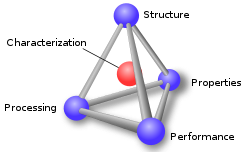
Week 1: Lecture 1 and 2, Introduction of material sciences,
The course “growth and characterization” basically deals with material science. Briefly defined, materials science is the study of “stuff.” Everything, the water we drink, the air we breathe and the houses where we live etc., is made of materials. Materials make modern life possible, from the polymers in the chair we sit on, the metal ball-point pen you’re using, and the concrete that made the building you live or work in to the materials that make up streets and highways and the car you drive. All these items are products of materials science and technology. Materials science and technology is a multidisciplinary approach to science that involves designing, choosing, and using major classes of materials which are metals, ceramics, polymers (plastics) and composites. Materials science combines many areas of science. Concepts drawn from chemistry, physics, and engineering make better, more useful, more economical and efficient “stuff. The boundaries are blurred between science and technology. It is not easy to know where one ends and the other begins. Hand in hand, science and technology help us to know enough about our world to make intelligent decisions that impact the quality of our lives and help us solve problems that ultimately impact that quality. Technologists develop tools that help us make new observations that advances in science. Science reveals new knowledge that extends our ability to adapt our environment. Materials Science is investigating relationships that exist between the structure and properties of materials. Materials Engineering focuses on the basis of these structure-property correlations, designing or engineering the structure of a material to produce a pre-determined set of properties.


